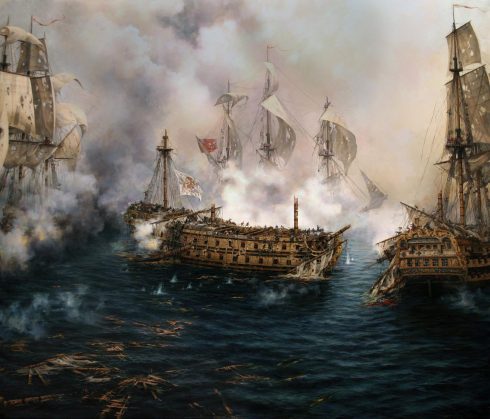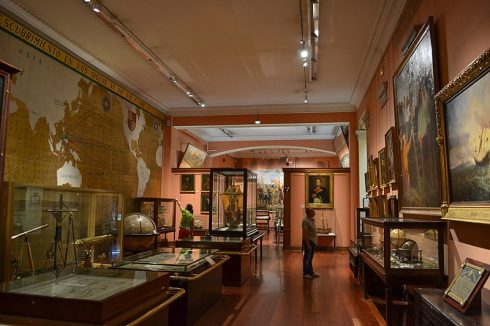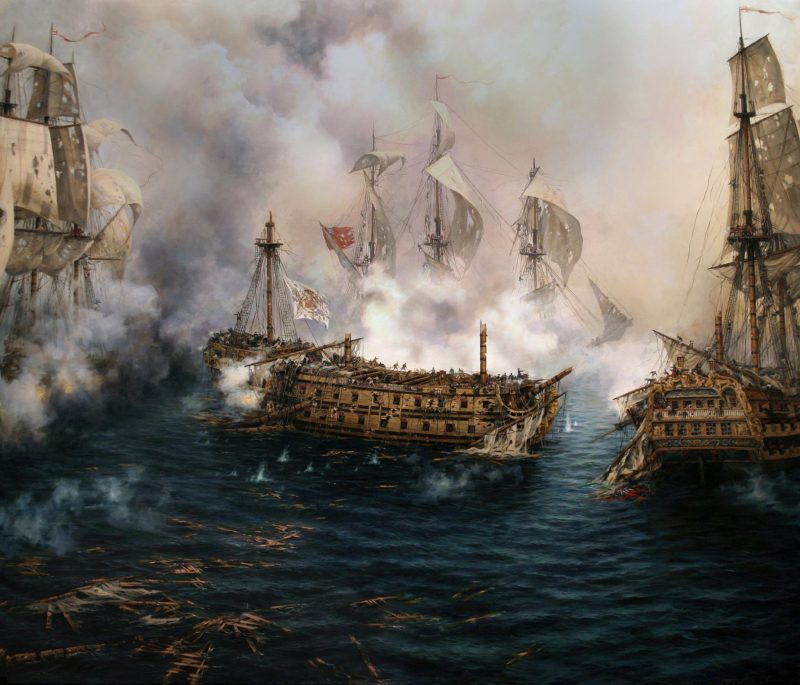IT seems that some people can’t take defeat – even hundreds of years after the fact.
A painting depicting the brave but ultimately doomed final battle of a Spanish warship against British privateers has been removed from public display at the Madrid Naval Museum.
The reason? Museum directors think it ‘disrespectful’ to the defeated captain to show the losing fight when it had gloriously beaten the Brits in three previous actions.

In place of the offending artwork they have hung a ‘more appropriate’ painting of an English ship sinking…
But the removal of the iconic painting in preparation for the museum’s re-opening has sparked a furious spat between directors and the general public. El Glorioso, as it is affectionately known, has been the painting most admired and photographed by visitors since it was acquired in 2014.
The reform of the formidable maritime museum, one of the most important in Europe, has been marred by controversy over its glaring omission.
El ultimo combate del Glorioso by the current military history painter Augusto Ferrar Dalmau, to give the painting its full title, shows the eponymous 74-gun warship shortly before its capture in a battle with a squadron of no less than 12 British privateers off Portugal in 1747.

The large-scale work recalls the moment when the ship, battered and out of ammo after days of intense battle, was forced to strike the colours of surrender.
Admirers of El Glorioso say the painting portrays a heroic action against a greater force that won even the enemy’s praise. For many, the picture depicting the ship and its brave crew who fought to the last bullet and cannonball is an inspiring story of human courage against the odds. But bosses at the museum hold a different opinion. They are of the view that in an institution set up to showcase great milestones and leading figures in Spanish naval history – a collection of 3,000 pieces in total – there is no place for a painting themed on defeat.
“El Glorioso won four battles against the British and lost one. Neither the Glorioso nor Captain Don Pedro Mesia de la Cerda deserve to be remembered for that defeat,” insisted Juan Rodríguez Garat, admiral director of the Institute of Naval History and Culture, in defence of the artwork’s removal.
“The painting does not reflect a significant event in the history of El Glorioso or the Navy. It has been replaced with a picture by Cortellini which depicts an English ship sinking,” added Garat.
Returning from Havana in 1747, El Glorioso had not only fended off three other attacks but landed her valuable cargo safely on Spanish shores before doing battle against 12 British warships alone for three days and one night. It was a feat even British chroniclers, not usually given to praising the Spanish, greeted with respect, describing it as ‘honourable and extraordinary’.
With tragic beauty, the magnificent painting portrays the ship in its final moments, stripped of its masts but still flying its flag, with the men fighting like beasts on the splintered and smoke-filled deck, surrounded by English ships.
Spanish novelist and journalist, Arturo Perez-Reverte Gutierrez, who often draws on numerous references to Spanish history and colonial past in his novels, reproached the museum decision to remove El Glorioso, tweeting:

“Please take this opportunity to explain why they (the Navy) have removed a painting by Ferrer-Falmau on El Glorioso. Is it something personal against the painter, or is it simply stupidity?”
Ironically, as Reverte also pointed out, in trying to hide the painting the museum has made it even more famous than it was before.
“I am happy for Augusto Ferrer-Dalmau and for the memory of El Glorioso,’ he tweeted. ‘The naval museum that acquires it is going to be filled with visitors.’
Click here to read more Spain News from The Olive Press.








